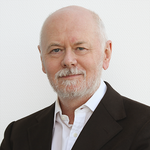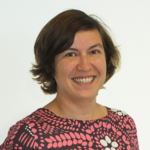Blog
Perspectives for Busan
From ReCom
Tony Addison, Lucy Scott, and Annett Victorero
Aid effectiveness was a recurrent theme during the UNU-WIDER conference on ‘Foreign Aid: Research and Communication’ (ReCom), held in October in Helsinki. ReCom is supported by the governments of Denmark (Danida) and Sweden (Sida). The conference brought together development economists, practitioners and policy makers from a wide range of countries.
November’s High-Level Forum on Aid Effectiveness was on everyone’s mind. The forum, which takes place in Busan (South Korea), is the fourth (HLF4), and follows those in Accra (2008), Paris (2005) and Rome (2003). Each has aimed to transform the relationship between DAC aid donors and recipient governments, paving the way for the future of development co-operation.
The ambition is laudable but much still needs to be done. In particular, advancing the Paris agenda—which stressed ownership, alignment, harmonization, and accountability—remains crucial. But HLF4 must be more ambitious than previous meetings to ensure the continued relevance, and impact, of aid.
The high-level forums have emphasized results, a key goal for ReCom, which aims to communicate research evidence on what works in aid, and what could work better.
Aid’s impact
The ReCom conference provided an array of insights on how to enhance aid effectiveness. Evidence presented showed the overall positive impact of aid on economic growth. While growth does not always translate into poverty reduction, poverty reduction is difficult to achieve without growth. Furthermore, the meeting highlighted the point that a ‘one size fits all’ approach to aid was never a good idea, and certainly not in the present context. Rather, policies need to be based on context-specific knowledge about the channels through which aid impacts on growth, as well as on other key development metrics, not least poverty reduction. Finn Tarp discusses the evidence on aid and growth elsewhere in this Angle.
How aid is spent is as important as how much of it is spent. This was another key message from the conference. How to spend aid to build institutions, particularly those promoting democracy, governance, and effective public spending were seen as crucial considerations for making aid more effective. The conference thereby amplified much of the research evidence of recent years.
Yet tensions remain. Donors are frequently faced with a trade-off between giving aid based on need, and giving aid to those countries with an ability to effectively spend the money on their priorities. Institution building has often turned out to be far slower in the former group, especially in the case of fragile states.
Policy coherence has to be at the centre of donor and recipient responses alike, in order to maximize the benefits of aid, given its often limited-scale. Trade and aid are frequently framed as coherence issues and one that Busan needs to push up its agenda (the host country, South Korea, being a prime example of both successful aid, and growth via trade). But the conference also discussed the need to bring revenues from natural resource wealth and aid flows into a more coherent and integrated macroeconomic framework. The former are now surpassing aid in scale in a number of African countries.
One of the most vexing issues is coherence between aid and climate change finance—whether to integrate them more closely or to keep them separate. Too often revenue mobilization is seen as a purely domestic issue by aid policy without considering the international dimension of taxation. DAC donors, for instance, need to share information, with governments of lower-income countries, about the value of the assets of their residents held abroad. These were among some of the key messages from the meeting.
The changing aid landscape
Participants at the ReCom conference noted that while development co-operation has achieved many positive results, progress towards the principles of the Paris Declaration has neither been rapid nor widespread. Arguably, the challenges to the aid effectiveness agenda have further increased. Fiscal pressures on DAC donors are likely to put pressure on their future ODA. As aid levels fall DAC donors are liable to be paying less attention to addressing the systemic problems of aid. In part because of domestic political pressures, it is likely that much aid will continue to be spent on projects, bypassing governments’ budgets and so having limited ownership by recipient countries.
The third draft outcome document of HLF4 sketches a map for co-operation for effective development. Its main aims are not just to deepen but also to broaden the aid effectiveness agenda. The Paris Declaration was drawn-up in a period when aid was overwhelmingly provided by DAC donors and currently only applies to them. Flows of development finance from non-DAC donors, southern-based NGOs and private foundations have all increased since 2005. How, and if, new actors will be involved in the effectiveness agenda is crucial.
The big question is: will emerging donors wish to align their aid to the same priorities as DAC-donors? China prefers giving money for infrastructure investments and is much less concerned with issues around governance. Aid recipient nations, meanwhile, may view a diversity of aid approaches and donors as an advantage, giving them greater choice on the types of aid which they accept. If the ownership principle of the Paris Declaration is to be taken seriously then the views of recipient governments need to be more fully reflected.
Towards a new vision of development effectiveness
The principles of the Paris Declaration remain an important cornerstone of development co-operation, and it is clear that DAC donors could do more to meet their commitments to these. The third draft of the outcome document of HLF4 underlines the challenge of this, emphasising the importance of gender equality, democracy and civil society for the effectiveness agenda. In addition this draft aims to answer calls for a comprehensive approach to effectiveness that accommodates new aid modalities and actors. It asserts the importance of South-South co-operation, involving the private sector and taking heed of climate finance. This is an impressive framework which, particularly in a situation of limited resources, requires significant levels of political commitment. Will this be forthcoming?
There is a risk of failing to re-examine the larger questions of how the rich world engages with the poor world. Should flows of finance, technology and knowledge, additional to ODA, but which aim to achieve development objectives, adhere to the same principles of aid effectiveness? What advantages do some flows have over others? South-South co-operation for instance, may be an effective means of transferring knowledge of existing low-cost technologies. Should DAC aid focus on issues of social welfare, or rather promote structural change in the economy? Or alternatively, should it prioritise aims around global public goods? Like state support at national level, international development aid is a unique public good that should be used to further objectives which private money does not support.
The ReCom conference concluded that hard choices have to be made in the current situation of limited resources to ensure that aid is used to its best effect. To realise the aid effectiveness agenda, research and knowledge-sharing are needed to find out what has worked in development aid and co-operation and to build a vision for the future of development effectiveness. Future ReCom initiatives will provide further insights to help guide discussions and decisions on this topic.
Tony Addison is Chief Economist/Deputy Director of UNU-WIDER.
Lucy Scott is a Research Associate, UNU-WIDER.
Annett Victorero is a Research/Project Assistant, UNU-WIDER.
WIDER Angle newsletter
October 2011
ISSN 1238-9544
 Join the network
Join the network

